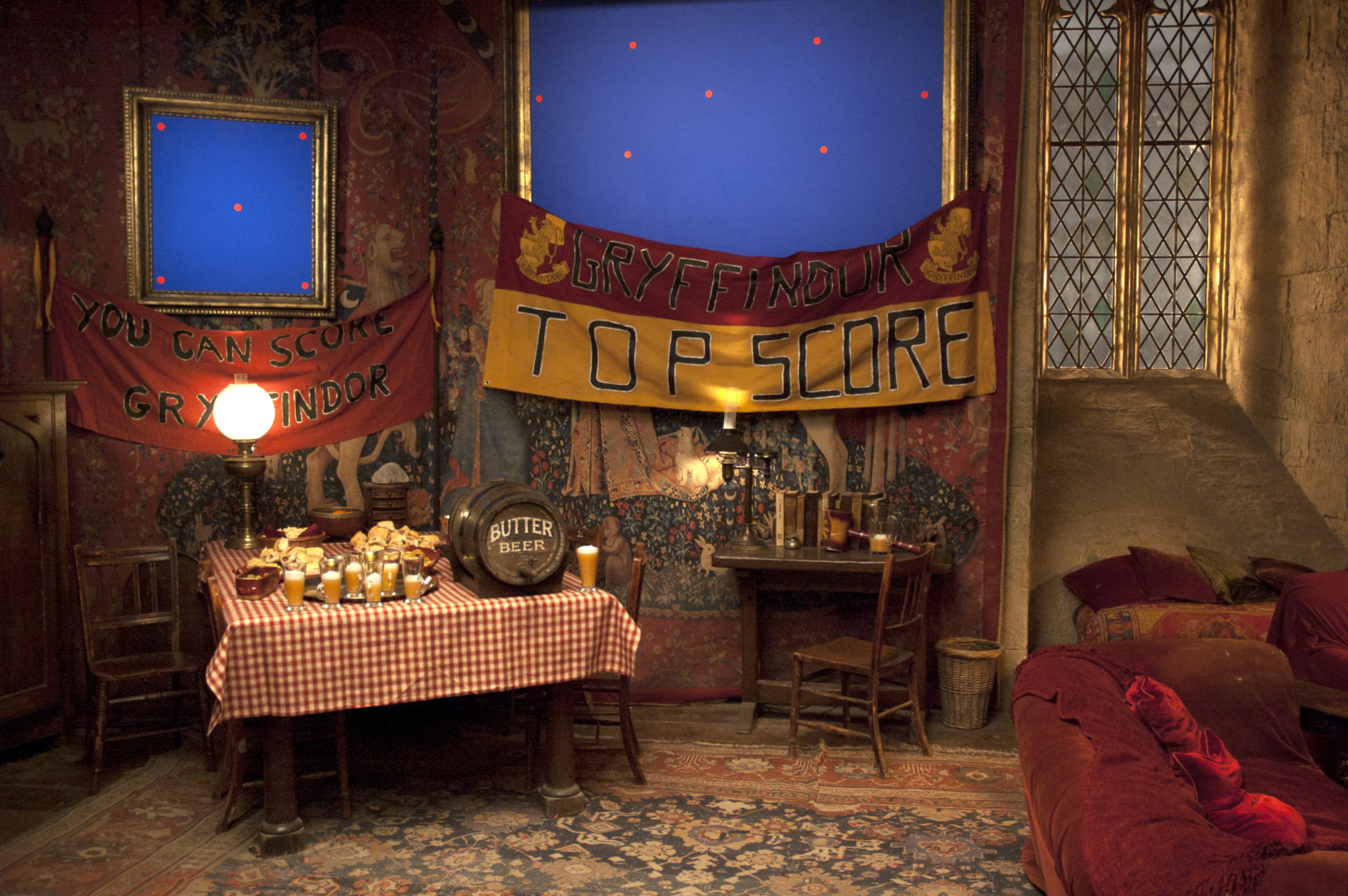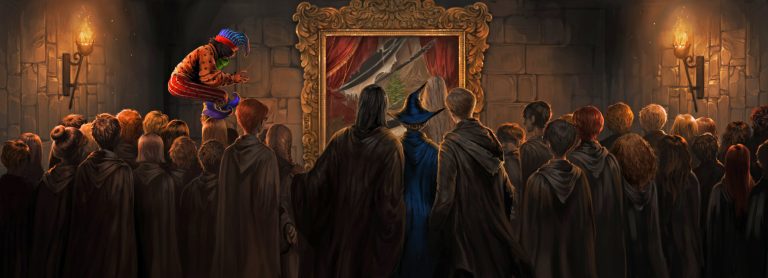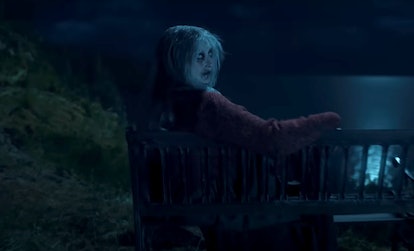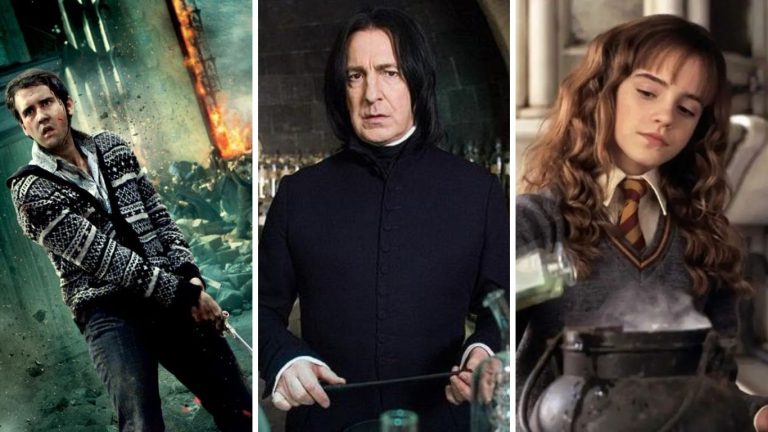What Is The Significance Of The Portraits In The Gryffindor Common Room?
Step into the magical world of Hogwarts and prepare to be enchanted by the mysteries that lie within the Gryffindor common room. Among the tapestries and cozy armchairs, there is something truly extraordinary – the portraits. But what is the significance of these animated paintings? In this article, we will delve into the captivating world of the portraits in the Gryffindor common room and explore their role in the wizarding community.
When you first enter the Gryffindor common room, your eyes are immediately drawn to the vibrant and lifelike portraits adorning the walls. These portraits are not mere decorations; they hold a deeper meaning and serve a purpose beyond aesthetic appeal. Each portrait contains the likeness of a previous head of Gryffindor house or a distinguished member of the wizarding world. These enchanting paintings serve as a connection to the past, a visual representation of the rich history and legacy of Gryffindor.
But what truly sets these portraits apart is their ability to interact with those in the present. Yes, you read that right! These paintings are not static images frozen in time; they possess a consciousness and can engage in conversations with the current Gryffindor students. Imagine sitting down for a chat with a former headmaster or seeking advice from a wise and experienced wizard. The portraits offer guidance, wisdom, and a sense of comfort to the current Gryffindor members, creating a unique bond between the past and the present.
In conclusion, the portraits in the Gryffindor common room are more than just decorative pieces. They serve as a bridge between the past and the present, offering a glimpse into the history of Gryffindor and providing guidance and support to the current members of the house. So, the next time you find yourself in the Gryffindor common room, take a moment to admire these magical paintings and appreciate the significance they hold in the wizarding world.

Understanding the Significance of Portraits in the Gryffindor Common Room
Portraits play a prominent role in the magical world of Harry Potter, particularly in the Gryffindor common room. These enchanted paintings bring life and personality to the otherwise ordinary walls, creating a sense of history, connection, and inspiration for the Gryffindor students. The portraits in the Gryffindor common room hold both practical and symbolic significance, adding depth and charm to the magical world created by J.K. Rowling.
Preserving the Past and Honoring Tradition
The portraits in the Gryffindor common room serve as a visual representation of the rich history and tradition of the Gryffindor house. These paintings depict former headmasters, headmistresses, and notable Gryffindor individuals, preserving their memory and contributions to the Hogwarts School of Witchcraft and Wizardry. As the students gather in the common room, they are surrounded by the presence of those who came before them, instilling a sense of belonging and pride in their Gryffindor heritage.
The portraits also provide a way for current Gryffindor students to connect with their predecessors. Through conversations and interactions with the painted figures, students can seek guidance, advice, and wisdom from those who have experienced similar challenges and triumphs during their time at Hogwarts. The portraits act as a bridge between the past and present, fostering a sense of community and continuity within the Gryffindor house.
A Source of Inspiration and Motivation
Beyond their historical significance, the portraits in the Gryffindor common room serve as a source of inspiration and motivation for the students. The painted individuals represent bravery, courage, and resilience, qualities that are highly valued in the Gryffindor house. As the students navigate their academic and personal journeys, the portraits remind them of the potential and strength within themselves.
The animated portraits often engage in conversations with the students, offering encouragement and advice when needed. These interactions can boost the students’ confidence and inspire them to persevere through challenges. The Gryffindor portraits act as mentors, guiding the students on their path to becoming courageous and honorable individuals.
In addition, the portraits in the Gryffindor common room also provide a sense of comfort and familiarity. The presence of these painted figures creates a warm and welcoming atmosphere, allowing students to feel at ease in their shared space. The portraits become trusted companions, offering a sense of stability and friendship in the ever-changing world of Hogwarts.
The significance of the portraits in the Gryffindor common room extends beyond their physical form. They represent the values, history, and inspiration that define the Gryffindor house. These enchanted paintings remind students of their roots, encourage them to embrace their inner bravery, and provide a sense of connection to the larger wizarding community. The portraits truly bring magic to life within the walls of the Gryffindor common room.
Key Takeaways: The Significance of Portraits in the Gryffindor Common Room
- The portraits in the Gryffindor common room are enchanted and have the ability to move, talk, and interact with the students.
- These portraits serve as a connection to the past, as they depict previous headmasters and headmistresses of Hogwarts.
- The portraits offer guidance and wisdom to the Gryffindor students, providing advice and sharing their knowledge and experiences.
- They create a sense of community and tradition within the Gryffindor house, as the portraits act as mentors and role models for the students.
- The portraits also add a touch of magic and wonder to the common room, making it a unique and special place for Gryffindor students.
Frequently Asked Questions
1. Who are the portraits in the Gryffindor common room?
The portraits in the Gryffindor common room are of previous headmasters and headmistresses of Hogwarts, as well as notable members of the Gryffindor house. These portraits are enchanted to come to life and interact with the current students.
Some of the well-known portraits include Godric Gryffindor, the founder of the Gryffindor house, and Albus Dumbledore, the former headmaster of Hogwarts. These portraits serve as a connection to the past and provide guidance and advice to the Gryffindor students.
2. What is the significance of the portraits in the Gryffindor common room?
The portraits in the Gryffindor common room hold great significance for the students. They not only provide a sense of tradition and history, but also offer valuable wisdom and support. The portraits act as mentors and confidants, offering advice and guidance to the Gryffindor students.
Additionally, the portraits serve as a reminder of the Gryffindor values and virtues, encouraging students to embody bravery, chivalry, and loyalty. They create a sense of belonging and unity within the house, inspiring students to strive for greatness and uphold the Gryffindor legacy.
3. How do the portraits in the Gryffindor common room communicate?
The portraits in the Gryffindor common room communicate by coming to life and engaging in conversation with the students. They are enchanted to move, speak, and interact just like real individuals. Students can approach the portraits and have meaningful conversations with them.
The portraits possess the knowledge and experience of the individuals they depict, allowing them to provide advice and guidance to the students. They can share stories from the past, offer words of encouragement, and even provide solutions to problems. The communication with the portraits is an interactive and dynamic experience for the Gryffindor students.
4. Can the portraits in the Gryffindor common room leave their frames?
No, the portraits in the Gryffindor common room cannot leave their frames. They are bound to their respective frames and remain within the confines of the common room. However, within their frames, they have the ability to move and interact with the students.
The enchantment placed on the portraits allows them to have limited mobility, but they are still restricted to the boundaries of their frames. This limitation ensures that the portraits remain a part of the Gryffindor common room and continue to fulfill their role as mentors and guides to the students.
5. How do the portraits in the Gryffindor common room benefit the students?
The portraits in the Gryffindor common room benefit the students in several ways. First and foremost, they provide a source of wisdom and guidance. The portraits possess the knowledge and experience of their subjects, offering valuable advice and insights to the students.
In addition, the portraits create a sense of belonging and community within the Gryffindor house. They serve as a reminder of the Gryffindor values and virtues, inspiring students to uphold these ideals. The portraits also offer encouragement and support, boosting the confidence and morale of the students. Overall, the presence of the portraits enriches the Gryffindor student experience and contributes to their personal and academic growth.

Hogwarts Legacy – 6 Secret Passages and Hidden Room Locations!
Final Summary: The Magic of Gryffindor Portraits Unveiled
As we delve into the enchanting world of Hogwarts, one cannot ignore the captivating presence of the portraits adorning the Gryffindor common room. These animated artworks hold a significance that goes beyond mere decoration. They serve as a testament to the rich history and values of Gryffindor House, providing guidance, wisdom, and a touch of whimsy to all who reside within its walls.
The portraits in the Gryffindor common room play a pivotal role in fostering a sense of community and connection among the Gryffindor students. These paintings are not mere still images but rather living representations of past Gryffindors, preserving their essence and allowing them to interact with the present. With their lively personalities and unique perspectives, the portraits offer advice, share stories, and even engage in friendly banter with the students. This dynamic interaction creates a sense of belonging and unity, as students can seek guidance from the wise and experienced Gryffindors who came before them.
Furthermore, the portraits serve as a visual reminder of the values that define Gryffindor House. Courage, bravery, and chivalry are at the core of Gryffindor’s ethos, and the portraits embody these traits through their own actions and anecdotes. Their presence inspires current Gryffindor students to embody these qualities in their own lives, encouraging them to face challenges head-on, stand up for what is right, and strive for greatness.
In conclusion, the portraits in the Gryffindor common room are much more than just decorative pieces. They breathe life into the history of Gryffindor House, fostering a sense of community and providing guidance to the current generation of students. These animated artworks not only add charm and whimsy to the common room but also serve as a constant reminder of the noble values that Gryffindors hold dear. So, next time you find yourself in the Gryffindor common room, take a moment to appreciate the magic of these portraits and the lessons they impart.






